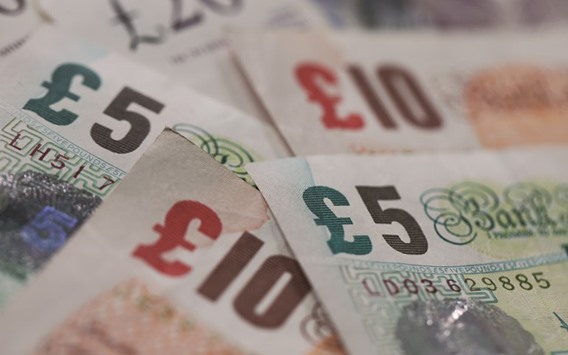The biggest pound bear expects the currency to lose 17% this year. And that’s if Britain remains part of the European Union.
Svenska Handelsbanken isn’t exactly an outlier, either. The next three most pessimistic forecasters in Bloomberg’s sterling survey predict declines of at least 8% to levels last seen in 1985, and all of their estimates are based on an assumption citizens will vote to remain in the EU in the forthcoming referendum.
This suggests that, if they’re wrong, the declines may be far worse.
Sterling has weakened 2% against the dollar in 2016 amid speculation global market turmoil will prevent the Bank of England from raising interest rates anytime soon.
And “Brexit” is far from a remote possibility, with a poll last week showing more support for quitting the EU than for remaining, with the result likely to be determined by undecided voters.
“Brexit would be an unprecedented situation - the pound could go very quickly,” said Georgette Boele, a strategist at ABN Amro Bank in Amsterdam. The Dutch lender is the fourth most-bearish forecaster on sterling, with a year-end estimate of $1.33, compared with $1.4429 yesterday.
Like the other bears, which also include Bank of America Corp and Saxo Bank, ABN Amro doesn’t deny that the prospect of Britain leaving the world’s largest single market is hurting the pound. Among the group, only Saxo appears in Bloomberg’s latest rankings of the most-accurate forecasters for the pound- dollar or euro-pound exchange rates.
“It’s very difficult to say how much lower our forecast will go” if Britain left the EU, “but it will go lower than $1.33,” Boele said.
The waning prospect of the BoE following the Federal Reserve with an early rate increase will be the main driver of the pound, not concern Britain will leave the EU, said Claes Mahlen, head of trading strategy at Handelsbanken in Stockholm.
The Swedish lender’s year-end forecast of $1.20 is the weakest of 58 estimates compiled by Bloomberg, and would take the pound to the lowest since May 1985.
“We don’t think that the UK will exit,” said Mahlen. “We don’t have that as a main scenario. You can argue that, to some extent, the risk is weakening the pound at the moment. But it’s not what we think will happen.”
The pound has been falling versus the dollar since the middle of 2015 and accelerated its slide this year, reaching an almost seven-year low of $1.4080 on January 21.
An inversion in the pound-dollar volatility curve suggests the referendum is becoming more of a concern for currency traders - whichever way they expect people to vote. Though no date has been set, Prime Minister David Cameron has hinted that he’d like to hold the referendum in June.
Implied six-month volatility, encompassing the period just after a June vote, has climbed to 10.9%, rising above the 10.8% level for one-year price swings. That’s typically a sign of stress and echoes the moves in the run-up to the UK’s general election last May and the Scottish independence referendum in September 2014.
A weaker pound should actually help boost growth from about the slowest pace in three years and cut the UK’s current- account deficit which, at 3.7% of gross domestic product in the third quarter, contrasts with a surplus in the EU.
Yet companies and investors from Pacific Investment Management Co to budget airline EasyJet have warned about “Brexit” damaging the economy. Goldman Sachs Group predicts sterling would plunge as much as 20% should Britain leave the EU, while HSBC Holdings said in January that its bullish forecast relies on the nation remaining in the 28-member club, which buys more than half its exports.
While concerns about an EU exit are undermining the pound, the prospect of Britain actually leaving the trading bloc is “exaggerated,” said Kamal Sharma, a London-based strategist at Bank of America. Its year-end forecast of $1.32 makes it the third-biggest bear.
Sterling’s decline versus the euro this year has been even sharper than its drop against the dollar.
It has fallenabout 5% versus the single currency and yesterday touched a 13- month low of 77.87 pence per euro. Median year-end forecasts of analysts surveyed by Bloomberg put the pound 7% stronger at 72 pence per euro and up almost 3% at $1.48.
Saxo Bank predicts a drop to $1.30 this year, driven mainly by volatile markets reducing the prospect of a UK rate increase. Even if it happened, “Brexit” wouldn’t have a lasting effect on the pound, said John Hardy, head of foreign-exchange strategy at the bank in Hellerup, Denmark.
“Sure, it’s a risk,” he said. “But I think it would be a one-off downside risk. A knee-jerk reaction.”

British pound notes are seen in an arranged photograph taken in London. The currency has weakened 2% against the dollar in 2016 amid speculation global market turmoil will prevent the Bank of England from raising interest rates anytime soon.
